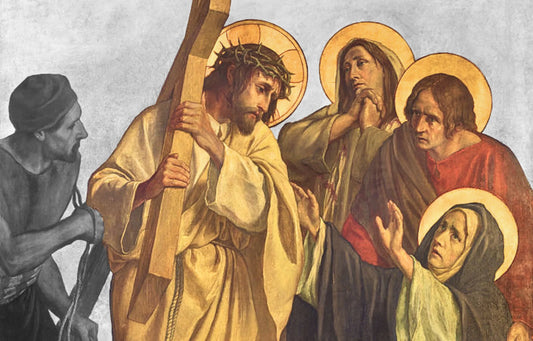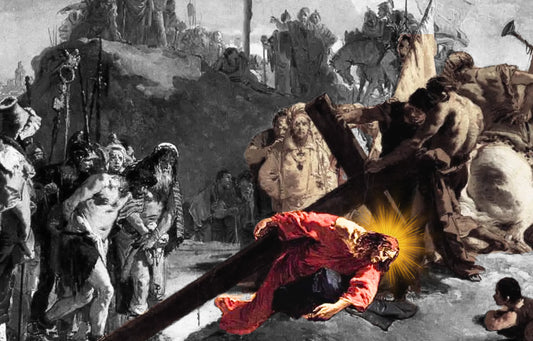Biblical numerology is the study of numbers in Scripture not merely as mathematical data, but as carriers of divine symbolism. Numbers like 3, 7, and 12 recur with intentional weight—often pointing to theological truths like the Trinity, divine perfection, and covenantal order. This is not mystical fortune-telling but a tool for biblical insight. As early as the 2nd century, Church Fathers such as Irenaeus and later Augustine emphasized the spiritual symbolism embedded in numerical patterns (City of God).
What Is Biblical Numerology and Why Does It Matter?
Jewish scholars and early Christians alike saw meaning in biblical numbers. Church Fathers like St. Ambrose and St. Jerome commented on their significance. For example, Augustine linked the 153 fish in John 21:11 to the universality of the Church. Yet Scripture is clear: interpreting numbers must be rooted in faith, not superstition. Deuteronomy 18:10–12 warns against divination. Numbers should illuminate Scripture, not replace it. As Origen wrote, numbers in the Bible should "not be taken lightly, but not always literally."
Numbers as Divine Communication
In the Bible, numbers frequently function as theological shorthand. The Ten Commandments (Exodus 20) structure moral law. Seven days mark divine completeness in creation (Genesis 2:2–3). The twelve tribes of Israel (Genesis 49) and twelve apostles (Matthew 10:1) represent covenantal wholeness. Even lifespans in Genesis 5, like Methuselah’s 969 years, reflect not randomness, but sacred design. Numbers aren’t decorative—they’re declarative, reinforcing God’s nature, promises, and plan for humanity.
The History Behind Numbers in Scripture
In the Hebrew Bible, numbers were typically spelled out as full words, underscoring the sacred nature of Scripture. This method preserved the dignity of the text and prevented manipulation through numerology. For instance, Genesis 5 lists patriarchal lifespans like Adam’s 930 years and Methuselah’s 969, numbers scholars believe may carry symbolic weight about generational order and divine judgment.
Ancient Jewish scribes used words to emphasize numbers' spiritual and covenantal context rather than reduce them to quantification. However, in non-scriptural contexts, symbolic shorthand was often used.
Alphabetic Numerals in Hebrew and Greek
Over time, cultures developed alphabetic numeral systems. In Hebrew, the 22 letters (plus 5 final forms) doubled as numbers: Aleph (א) = 1, Beth (ב) = 2, up to Tav (ת) = 400. This formed the basis for gematria, where the numerical value of words could reveal symbolic meanings—David (דוד) = 14, which Matthew highlights in Jesus’ genealogy (Matthew 1:17) to underline messianic fulfillment.
The Greek system was similar but used 24 letters plus three symbols, including the stigma (ϛ) for 6. It’s noteworthy that the number of the Beast—666—is written using these symbols in Revelation 13:18, a fact that captivated early theologians like Irenaeus.
The Roman Numeral System
The Romans used just six letters: I, V, X, L, C, D, with combinations for values. The number 666 is interesting here—I + V + X + L + C + D = 666, which many Church Fathers interpreted as an ominous connection between Roman imperial power and apocalyptic warnings. Hippolytus, in the 3rd century, even linked the seven hills of Rome (Revelation 17:9) to symbolic judgment.
Their system didn’t include a distinct character for 1,000—this was depicted as two Ds back-to-back, resembling an M.
Acrophonic and Substitution Systems
The Greeks and Phoenicians employed an earlier method: the acrophonic system, which used the first letter of a number’s name (e.g., Δ for “deka” or ten). It was functional for small values but unwieldy for large calculations. These systems laid the groundwork for the numerical literacy needed in legal, commercial, and prophetic texts.
The Arrival of Arabic Numerals
Our modern digits—0 through 9—are from the Arabic system, introduced to Europe by Jesuit missionaries in the 17th century. Although Arabic numerals revolutionized commerce and science, they arrived centuries after the biblical canon was closed. The Bible’s symbolic use of numbers remained tied to ancient notation systems, especially those based on alphabets.
Biblical Use of Numeric Patterns
Parallelism and Repetition
Scripture frequently uses numbers as literary devices to underscore meaning. Repetition of specific numbers—especially 3, 7, and 12—serves both mnemonic and theological purposes. For instance, the number seven appears over 700 times in the Bible, often signifying divine perfection and completeness (Genesis 2:2–3; Revelation 1:4). This structure is not random; it reflects intentional design. In Proverbs, numerical parallelism (“three things… no, four…”) adds emphasis and rhythm (Proverbs 30:18–19). Repetition invites the reader to meditate on key truths embedded in form as well as content.
Symbolism in Worship and Law
Numbers play a foundational role in biblical worship and legal instruction. The seven-day week culminates in Sabbath rest, rooted in the divine pattern of creation (Genesis 2:2–3). The five books of the Torah (Pentateuch) form the core of Jewish law, with “five” representing grace and covenantal instruction. Twelve tribes (Genesis 49) and twelve apostles (Matthew 10:1) signify completeness in governance, mirrored again in Revelation 21:12–14 with twelve gates and twelve foundation stones in the New Jerusalem. Even the fourfold division of time for Temple sacrifices (dawn, 9am, noon, 3pm) shows how numbers ordered daily worship.
Prophecy and Symbolic Numbers
Prophetic literature uses numbers as spiritual symbols layered with meaning. Daniel’s 70 weeks (Daniel 9:24) and the 70 years of exile (Jeremiah 25:11) reflect structured periods of judgment and restoration. The 3½ years in Daniel and Revelation (expressed as 1,260 days or 42 months) denote incomplete tribulation and divine interruption (Daniel 7:25; Revelation 11:2–3). This symbolism is echoed in the War Scroll from Qumran, where numbers like 40 and 12 feature in eschatological warfare—demonstrating how numerology permeated Second Temple Jewish thought. Far from arbitrary, these numbers shape theological timelines with prophetic precision.
Symbolic Meanings of Key Numbers in the Bible
Top Tier (Most Important)
3 – Divine completeness (Trinity, resurrection, divine patterns).
7 – Perfection/covenant (Creation week, 7 churches, 70x7 forgiveness).
12 – God’s people (12 tribes, 12 apostles, New Jerusalem’s 12 gates).
40 – Testing/preparation (Flood, Moses on Sinai, Jesus’ temptation).
Second Tier (Highly Symbolic)
1 – Divine unity ("The Lord is one," Deut. 6:4).
6 – Human imperfection (Fall on 6th day; 666 as anti-Trinity).
10 – Divine order (Commandments, 10 plagues).
4 – Creation/earth (4 corners of earth, 4 living creatures in Revelation).
Third Tier (Contextual Significance)
5 – Grace (5 loaves feeding 5,000; Pentateuch)..
8 – New beginnings (Circumcision on 8th day; 8 souls saved in Noah’s ark)..
70 – Fullness of judgment/restoration (70 years exile, 70 disciples sent out).
1 – Unity of God and Divine Sovereignty
The number one symbolizes the unity and singularity of God. It echoes the foundational Shema of Israel: “Hear, O Israel: The LORD our God, the LORD is one” (Deuteronomy 6:4). This oneness reflects God’s indivisible sovereignty and unique divine nature. In Christian theology, “one” also points to the Father as the first Person of the Trinity, underscoring divine primacy and completeness. As an ordinal number, it denotes primacy and perfection, the source from which all else flows. Unity is foundational in both Old and New Testaments, bridging the monotheistic faith of Israel with the triune God revealed in Christ.
2 – Witness, Division, and Relationship
The number two often signifies testimony and witness, fulfilling the biblical standard that “every matter must be established by the testimony of two or three witnesses” (Deuteronomy 19:15; Matthew 18:16). It also symbolizes division or contrast, such as light and darkness at Creation (Genesis 1:3-4). In the New Testament, Jesus sends disciples out “two by two” (Mark 6:7), and two believers gathered in His name promise His presence (Matthew 18:20). Two represents relational dynamics—complementarity and covenant—while also pointing to Christ’s dual nature as fully human and fully divine.
3 – Trinity and Divine Completeness
Three is the number of divine fullness and perfection. It represents the Trinity—Father, Son, and Holy Spirit—and signals something substantial and complete. In the Old Testament, three appears in significant moments: the three Patriarchs (Abraham, Isaac, Jacob), the three days Jonah spent in the fish, and the triadic “Holy, Holy, Holy” in Isaiah (Isaiah 6:3) and Revelation (Revelation 4:8). In the New Testament, Christ rises on the third day (Luke 24:7), underscoring resurrection and redemption. Three serves as a “signpost” in Scripture, marking critical divine acts and spiritual truths.
4 – Earth, Creation, and Universality
The number four symbolizes the created world and its universality. There are four cardinal directions (north, south, east, west), four seasons, and four rivers flowing from Eden (Genesis 2:10). The Tabernacle and Temple had four divisions and corners, and four cherubim guard God’s throne (Ezekiel 1:10; Revelation 4:6-8). The number expresses completeness in the earthly realm and the scope of God’s creation, pointing to His sovereignty over all nations and lands.
5 – Grace, Power, and Sacrifice
Five is associated with divine grace and power, often tied to sacrifice and covenant. The Torah’s five books represent God’s law and covenant with His people. Sacrificial offerings under the Old Covenant include five animal types—goats, sheep, cattle, pigeons, and doves (Leviticus 1–5). Notably, God changes Abram’s and Sarai’s names by adding the fifth letter (the Hebrew “hey,” meaning grace), marking their transformation by divine favor (Genesis 17:5, 15). Jesus’ five wounds on the Cross symbolize ultimate sacrifice and grace extended to humanity.
6 – Humanity, Sin, and Incompletion
The number six symbolizes humanity and its imperfection. Man was created on the sixth day (Genesis 1:31), and six often represents labor and earthly toil—humans work six days before rest (Exodus 20:9-10). Six is also linked to sin and rebellion, most famously in the number of the Beast, 666 (Revelation 13:18), underscoring man’s fallen nature and opposition to God’s rule. Six falls short of the perfect seven, highlighting incompletion and moral weakness without divine grace.
7 – Covenant, Perfection, and the Holy Spirit
Seven is the quintessential number of spiritual perfection and covenantal fullness. God rested on the seventh day, blessing it as holy (Genesis 2:2-3). The number appears repeatedly: seven gifts of the Holy Spirit (Isaiah 11:2-3; CCC 1831), seven churches and seals in Revelation, and the sevenfold menorah. Seven symbolizes divine completeness in both time and ritual, such as the seven annual feasts in the Sinai covenant (Leviticus 23). It’s the spiritual “perfect” number, marking God’s covenant faithfulness and the fullness of grace.
8 – New Beginnings, Resurrection, Salvation
The number eight signifies new beginnings and resurrection. Circumcision occurs on the eighth day as a sign of the covenant and new life (Genesis 17:12). Christ’s resurrection appearances number eight, symbolizing victory over death and the inauguration of salvation (Mark 16:9-20). In gematria, the name “Jesus” totals 888 in Greek, reinforcing the connection of eight with salvation and divine renewal. Eight points beyond completion to a fresh start and eternal life.
10 – Divine Order and Commandments
Ten is the number of divine order and law. The Ten Commandments (Exodus 20) provide God’s moral framework for Israel and humanity. The number also reflects completeness in governance, such as the ten lost tribes of Israel and the tithe (one-tenth) as an expression of devotion and obedience. Ten marks God’s structured order for human life, social justice, and worship.
12 – Governmental Perfection and Spiritual Authority
Twelve represents divine governance and spiritual authority. Israel’s twelve tribes form the foundation of God’s covenant people (Genesis 49), and Jesus appoints twelve apostles to lead the Church (Matthew 10). Twelve loaves of bread were placed weekly in the temple as a sign of God’s provision (Leviticus 24:5-9). The number symbolizes completeness in leadership, organization, and God’s plan for His people’s spiritual administration.
21 – Divine Perfection and Completion of Time
The number 21 often symbolizes the fullness of divine wisdom and the completion of spiritual cycles. In Revelation, it’s linked to 3 sevens (7 × 3), emphasizing intensified perfection. Daniel’s 21-day fast (Daniel 10:2–3) represents a period of spiritual warfare and delay before divine revelation—highlighting that God’s timing, though mysterious, is always complete and purposeful.
30 – Maturity and Public Ministry
The number thirty symbolizes maturity and readiness for service. Aaron and his sons began priestly duties at age 30 (Numbers 4:3), marking the age of full responsibility in spiritual leadership. Jesus began His public ministry at 30 (Luke 3:23), showing the start of His active mission to redeem humanity. Thirty points to a season of commitment and dedication to God’s calling.
40 – Testing, Trials, and Preparation
Forty is the classic number of testing, trial, and preparation. Moses spent 40 days on Mount Sinai receiving the Law (Exodus 24:18), Israel wandered 40 years in the desert (Numbers 14:33), and Jesus fasted 40 days in the wilderness before His ministry (Matthew 4:2). Forty often marks periods of purification and spiritual readiness before a new phase or covenant.
70 – Judgment, Leadership, and Exile
The number seventy represents judgment, leadership, and sometimes exile. God appointed seventy elders to assist Moses in leadership (Numbers 11:16), and Israel’s Babylonian exile lasted 70 years (Jeremiah 29:10). Seventy can symbolize the fullness of human responsibility under God’s judgment and the completion of divine disciplinary periods.
144,000 – Symbolic Fulfillment and Heavenly Redemption
In Revelation 7:4-8, 144,000 sealed servants symbolize the fullness of God’s redeemed people. This number is the product of twelve (tribes) squared and multiplied by ten (divine order) cubed (12² × 10³), emphasizing perfect completeness in both earthly and divine governance. It represents the totality of God’s faithful followers, sealed for protection and eternal worship.
What Is Gematria and How Is It Used in the Bible?
Gematria is an ancient interpretive method that assigns numerical values to letters—most commonly in Hebrew and Greek. Unlike speculative numerology or occult number play, biblical gematria is a theological tool. It reveals patterns that reinforce the coherence of Scripture and illuminate divine design. Rooted in Jewish tradition and used by early Christians, gematria finds deeper layers of meaning in names, titles, and phrases. For example, David’s name in Hebrew equals 14, a number used symbolically in Matthew’s genealogy of Jesus (Matthew 1:17).
Hebrew and Greek Systems: Letters as Numbers
The Hebrew alphabet assigns numerical values from 1 to 400 across its 22 letters. Additional “final forms” round out the system. Greek follows a similar structure but uses 24 letters plus three obsolete characters to complete the numeric sequence. A unique twist in Greek is the symbol stigma (ϛ), which holds the value 6 and is ominously tied to the number of the Beast (Revelation 13:18). These systems allowed biblical authors to encode layers of meaning recognizable to literate audiences of their time.
Jesus = 888: Fullness of Salvation
One of the most cited gematria examples is Jesus’ name in Greek—Ιησούς—which totals 888. The number 8 in biblical symbolism represents new creation, resurrection, and salvation (Genesis 17:12; 1 Peter 3:20). Three eights reinforce Christ’s identity as the ultimate restorer, the “eighth day” beyond the cycle of seven. Even more compelling, every major Greek title for Jesus is a multiple of 8:
- Christ (Χριστός) = 1480 (8 × 185)
- Lord (Κύριος) = 800 (8 × 100)
- Savior (Σωτήρ) = 1408 (8² × 22)
- Son (Υἱός) = 880 (8 × 110)
Nero Caesar and the Beast: 666 or 616?
The number of the Beast in Revelation is famously 666, though some early manuscripts list 616. This discrepancy aligns with gematria values of “Neron Caesar” in Hebrew (666) and the Latinized “Nero Caesar” (616). Early Christians, like Irenaeus, recognized this encoding as pointing to the Roman emperor Nero, a persecutor of the Church. Intriguingly, when the Roman numerals used in Nero’s empire are added—I (1) + V (5) + X (10) + L (50) + C (100) + D (500)—they also total 666, further reinforcing the link.
Sacred Names and Numeric Significance
Gematria reveals patterns in many biblical names:
- Abraham = 248 (a number associated with the full set of positive commandments in Jewish tradition)
- Messiah (Μεσσίας) = 656
- Emmanuel (Ἐμμανουήλ) = 25,600 (8³ × 50)
These numbers are not random but reflect theological truths. The number 153 fish in John 21:11 has also long intrigued Church Fathers like Jerome and Augustine, who linked it to universality, possibly as the triangular number of 17 (1+2+…+17=153), symbolizing divine completeness and inclusivity.
Caution and Discernment in Interpreting Numbers
The Church Fathers on Numerology: A Word of Warning
While the symbolic use of numbers in Scripture is both rich and legitimate, early Church Fathers strongly warned against treating numbers as tools for secret knowledge or divination. St. Ambrose insisted that we interpret numbers not as Pythagoreans did, but according to God’s revelation—“not after the doctrine of Pythagoras…but according to the grace of the Spirit” (Epistle to Horontianus).
Origen also condemned occult systems, calling them “the wisdom of the princes of the world” and associating them with Egyptian and Chaldean mysticism. St. Jerome dismissed attempts to extract hidden codes or magical interpretations from Scripture as dangerous distortions of the Word of God.
Divination and the Biblical Prohibition
The Bible explicitly forbids all forms of divination. Deuteronomy 18:10–12 states:
“Let no one be found among you… who practices divination or sorcery… Anyone who does these things is detestable to the Lord.”
The use of numbers to predict the future or seek hidden power falls into this condemned category when it steps outside biblical and theological bounds.
Responsible Interpretation: Anchored in Revelation
To interpret biblical numbers faithfully, we must stay grounded in the whole witness of Scripture. Numbers are never ends in themselves—they point to spiritual truths already revealed by God. Interpretations must align with the canon of Scripture, the Church’s tradition, and sound theological reasoning. Numbers can deepen our understanding, but they should never replace the plain meaning of the text or be used to create esoteric teachings.
Seek Wisdom in Community
God gave us the Church for a reason. When wrestling with symbolic meanings—especially in complex texts like Daniel or Revelation—seek guidance from trained pastors, trusted theologians, and time-tested commentaries. Biblical numerology, when interpreted with humility and care, can enrich our faith. But if untethered from truth, it easily leads to superstition or sensationalism.














